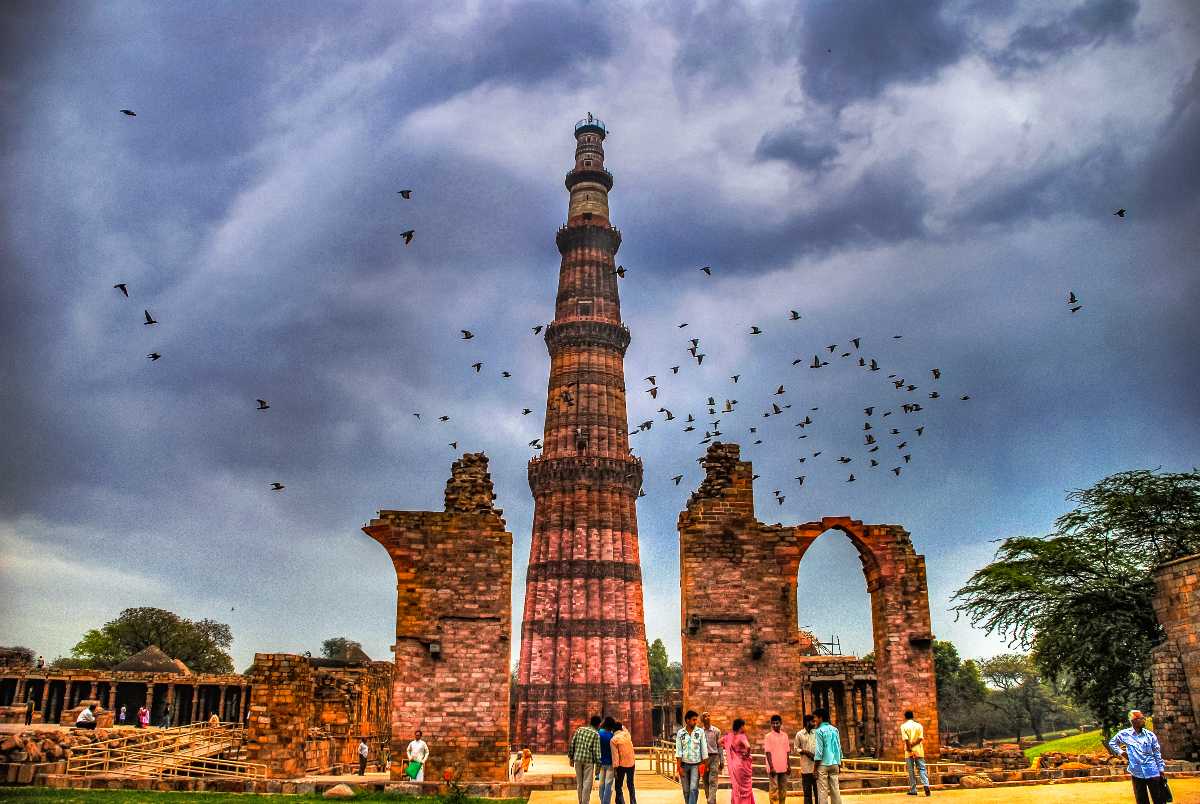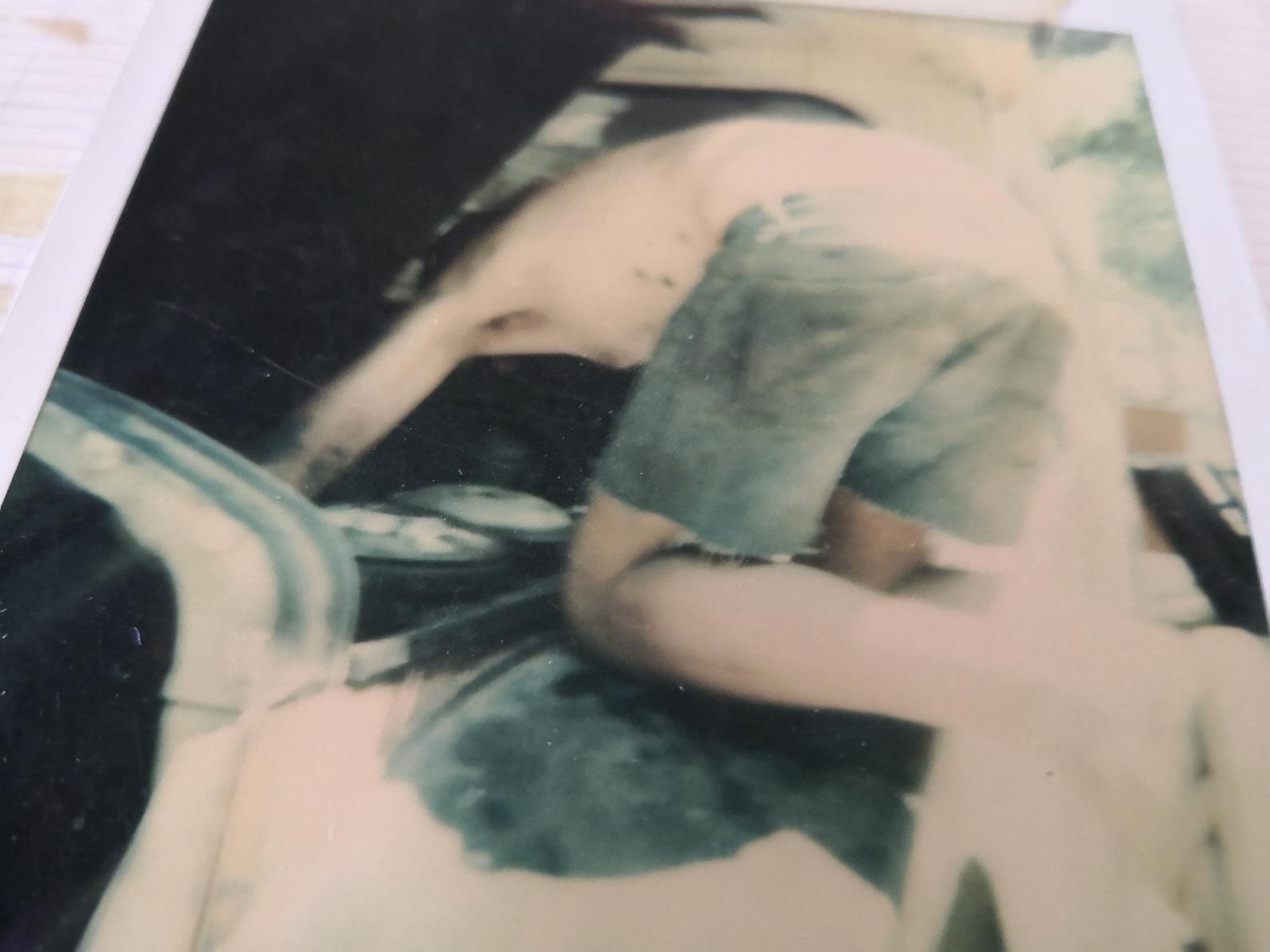
AsianOverland.net
Tour Guide - Itinerary
Asian Overland Sydney to London
Started 22/06/2022 Finished 21/06/2023365 Days ITINERARY
Day 329 date 16/05/2023OLD DELHI to QUTUB MINAR, INDIA
ASIANOVERLAND.NET SYDNEY TO LONDON DAY 105/329/17: QUTUB MINAR, OLD DELHI, INDIA
One of the most stunning features of Delhi, which is perfect for walking tours and rickshaw rides, is that layer upon layer of historical artifacts are superimposed one over the other, from the earliest Hindu times thousands of years ago, to more recent historical eras. Even the Dehli Gate camping ground has an impressive Dancing Shiva water feature. The nearby iron pillar, one of the world's foremost metallurgical curiosities, is 7.2 metre high and weighs more than six tonnes. It was originally erected in front of a Vishnu Temple complex at Udayagiri around 402 AD, and later shifted in the 10th century CE to its present location in the Qutub Minar complex in Delhi, as part of another Vishnu Temple.
The iron pillar bears an inscription in Sanskrit in Brahmi script dating 4th century AD, which indicates that the pillar was set up as a Vishnudhvaja, standard of god, on the hill known as Vishnupada in memory of a mighty king named Chandra.
The Qutub Minar complex also includes the tallest minaret in the world built of bricks (239 ft), which celebrates a victory of the Delhi Sultanate in 1192, and is a fine example of medieval Afghan architecture.
The Mughal Empire did not stamp out the local societies or cultures it came to rule. Instead, it balanced and pacified them through new administrative practices and inclusive ruling elites. Eschewing tribal bonds and Islamic identity, especially under Akbar, the Mughals united their far-flung realms through loyalty, expressed through a Persianised culture, to an emperor who had near-divine status. The relative peace maintained by the Mughal empire during much of the 17th century was a factor in India's economic expansion, resulting in greater patronage of painting, literary forms, textiles, and architecture.
Newly coherent social groups in northern and western India, such as the Marathas, the Rajputs, and the Sikhs, gained military and governing power during Mughal rule. Expanding commerce during Mughal rule gave rise to new Indian commercial and political elites along the coasts of southern and eastern India. As the Mughal empire disintegrated, many among these elites were able to seek and control their own affairs.
By the early 18th century, the English East India Company had established coastal outposts, especially in Bengal, and gained control over the Bengal region by 1765. Its access to the riches of Bengal and the subsequent increased strength and size of its army, enabled it to annexe or subdue most of India by the 1820s. The East India Company's control of the seas, greater resources, and more advanced military training and cannons, led to it dominating India with its military muscle.
Our westound overland Trip Book records: “DAY 17. 4/10/80
Gary just can’t keep his hands off ‘his’ ’Knackers’.
He’s always fixing it.
Mind you, it’s got to be cured and looked after or should I say maintained to go.
Gary gets a free shower while changing the brake pads.
Saturday night out to the disco.
The drinks were too expensive so we had a pipe instead.
Whoever thought we’d have to boogie to ABBA, after all these years.
Gary had a little chat with the manager – Steve was ’boring’, & everyone else danced on.”
© This work is copyright. Apart from any use permitted under the Copyright Act 1968, no part may be reproduced by any process, nor may any other exclusive right be exercised, without the permission of Peter Searle, peter@portseavillageresort.com; 1980-2024.
Website built by Justin O’Dea www.webdeveloperdocklands.com.au





